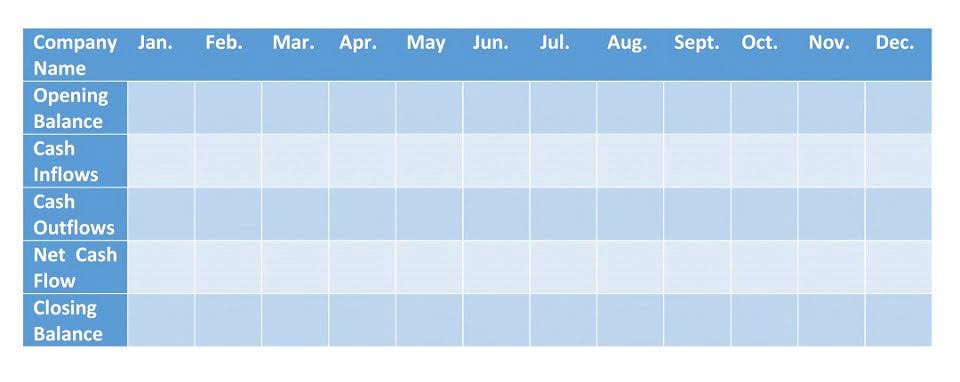
This means that a company need not wait until the end of accounting periods to find out these crucial financial metrics. It also means that approximate calculations are replaced by real, data-based numbers, increasing the accuracy of financial statements. Do note, however, that direct labor costs generally do include retirement funds, holiday pays, payroll taxes, and any additional fees that direct laborers bring with them. Some companies may even decide to include costs related to training the production staff in direct labor costs.
Total Manufacturing Cost: Formula, Guide, & How to Calculate
- Direct material is the cost of raw materials used in the manufacturing process which are inextricably linked to the final product.
- It may also trigger an understanding of which suppliers are charging too much, which may lead to a realignment of the company’s mix of suppliers towards those more willing to work with the company on price.
- It can be used to adjust the selling price of your products, identify and cut expenses, and calculate other key metrics like the Cost of Goods Manufactured.
- Essentially, COGS is to finished goods inventory what COGM is to WIP inventory.
- Total Manufacturing Cost is the total sum that has been spent on production activities during one financial period.
This includes everything from utility bills to equipment maintenance and depreciation of equipment. You’re probably wondering what all those terms mean, and we’ll get to that. But before talking about the total manufacturing cost formula, it’s essential to know about direct and indirect costs. Once you identify the indirect costs, get detailed expense data for each of these overhead cost categories for a specific period, such as a month or a year.

Manufacturing Overhead
- In fact, you already know that labor costs can spiral out of control if you don’t meticulously monitor them.
- Take advantage of any bulk-buy discounts or seasonal supply-side surplus to guard against off-season price increases.
- Understanding the components of manufacturing costs provides a clear picture of where expenses arise and how they impact the overall financial health of the business.
- The Total Manufacturing Cost Formula is an essential tool for businesses to evaluate their production expenses comprehensively that helps financial health of company.
- The cost of labor includes employee pay, benefits, labor taxes and contributions, and workers’ compensation insurance.
- Optimize your workforce, take control of inefficiencies, and watch your profits soar with team time tracking software.
For Example, customers buy your product because of its high quality then focus on improving quality over the idea of adding more product features. By determining what is important to your customers and market, you can selectively choose what is not important and reduce that cost. By taking the time to calculate it and understanding it will pay long term dividends. Instead of sinking time into managing spreadsheets, inFlow consolidates information in one place and provides updates in real-time. It has the ability to create a bill of material (BOM), as well as help calculate your cost of goods sold. Gone is the need to monitor stock levels and calculate potential output– inFlow does it all instead.
Calculating the direct labor cost with a real world example

This gives a better insight into cost and profit in real-time, helping to set more informed pricing. An example of this difference is if the company producing blankets determines that the total manufacturing cost for 1000 blankets is $20,000. Due to a staffing shortage, only 750 blankets could be produced by the end of the period, lowering the COGM to $15,000. Regardless of the number of blankets made during https://www.bookstime.com/ the production process, $20,000 was still allocated for the labor, overhead, and materials used in this production run. Businesses can reduce Total production costs while maintaining quality by optimizing processes, embracing lean manufacturing principles, and seeking cost-effective materials. Costs of goods manufactured (COGM) includes all the costs for finished goods manufactured during a given period.
Combining her knowledge of multiple disciplines, she seeks to help others optimize their work-life balance, which she believes is the key to minimizing stress. Optimize your workforce, take control of inefficiencies, and watch your profits soar with team time tracking software. As a result, you’ll make informed decisions about future bids to clients and your internal cost calculations. Effectively managing expenses in manufacturing isn’t just an option — it’s a necessity. A balance sheet is one of the financial statements that gives a view of the company’s financial position, while assets are the resources a company owns. If you have an effective way for capturing the data related to these aspects, then it becomes possible to accurately complete the calculation.

This cohesion leads to powerful data, that can be reported on, analysed, and used for important strategic decisions. It’s much easier to work out total manufacturing cost when the latest financial data can be accessed at the click of a button, and when the information from all departments is inter-connected. Manufacturing overhead is made up of any other operational costs your business incurs for production to be possible. This would normally total manufacturing cost formula include aspects like energy bills and rent, as it’s not possible to create items without power or a physical workspace. Businesses can monitor and control manufacturing costs by setting up a robust cost tracking system, conducting regular budget vs. actual cost analyses, and identifying areas for improvement. An electronics manufacturer might routinely review material waste and implement measures to reduce it, leading to ongoing cost control.
- This gives a better insight into cost and profit in real-time, without having to wait until the financial period end, and thus helps you to price your products better.
- Keep in mind that direct materials are only those that are used in a significant, measurable quantity, i.e. the materials that are included in the bill of materials of a product.
- If you have an effective way for capturing the data related to these aspects, then it becomes possible to accurately complete the calculation.
- This means that a company need not wait until the end of accounting periods to find out these crucial financial metrics.
- Total manufacturing costs include all costs incurred in the period, regardless of whether the product was completely finished.
- Since the total manufacturing cost is an essential metric for understanding the productivity and profitability of a business, it really pays to get it right the first time.
What is the Total manufacturing costs formula?
He is passionate about empowering key stakeholders at Cin7 to achieve more today than they could yesterday. John brings over 10 years of career experience across various operational and data analytics roles. To calculate this, divide the number of units produced by the number of hours needed to produce them. It is good practice to regularly evaluate your supply chain and to identify opportunities for improvement. Take advantage of any bulk-buy discounts or seasonal supply-side surplus to guard against off-season price increases.
Understanding Perpetual Inventory
- The direct materials costs would include the wood to make the house and any glue or nails used to hold it together.
- Firstly though, you should be certain you know exactly what each aspect means.
- Direct materials are the raw materials used in the creation of a product.
- To calculate total manufacturing cost, add your direct material costs to the sum of your direct labour costs and manufacturing overhead.
- These can include indirect labor costs, such as wages for supervisors and the material handling team.


